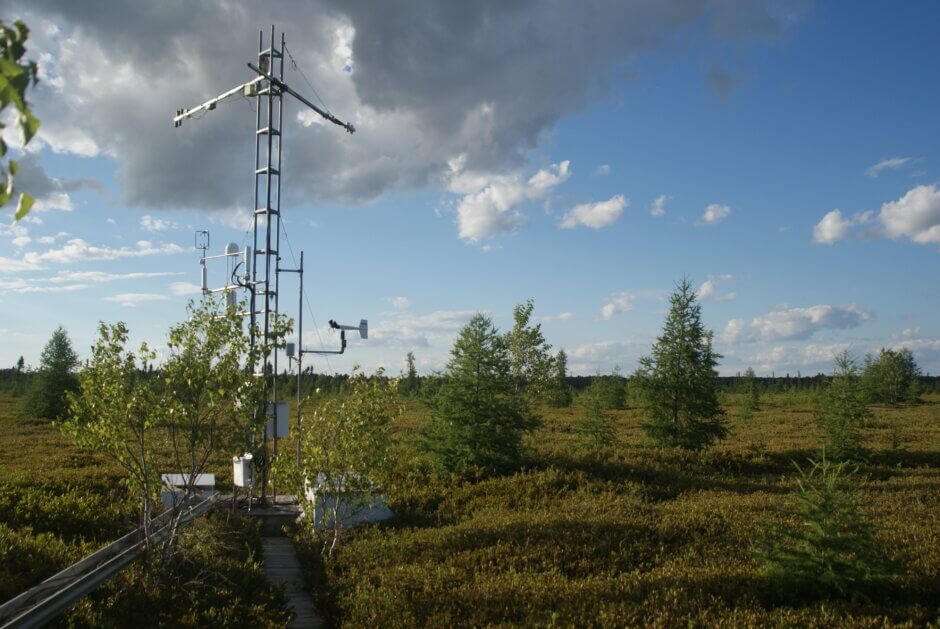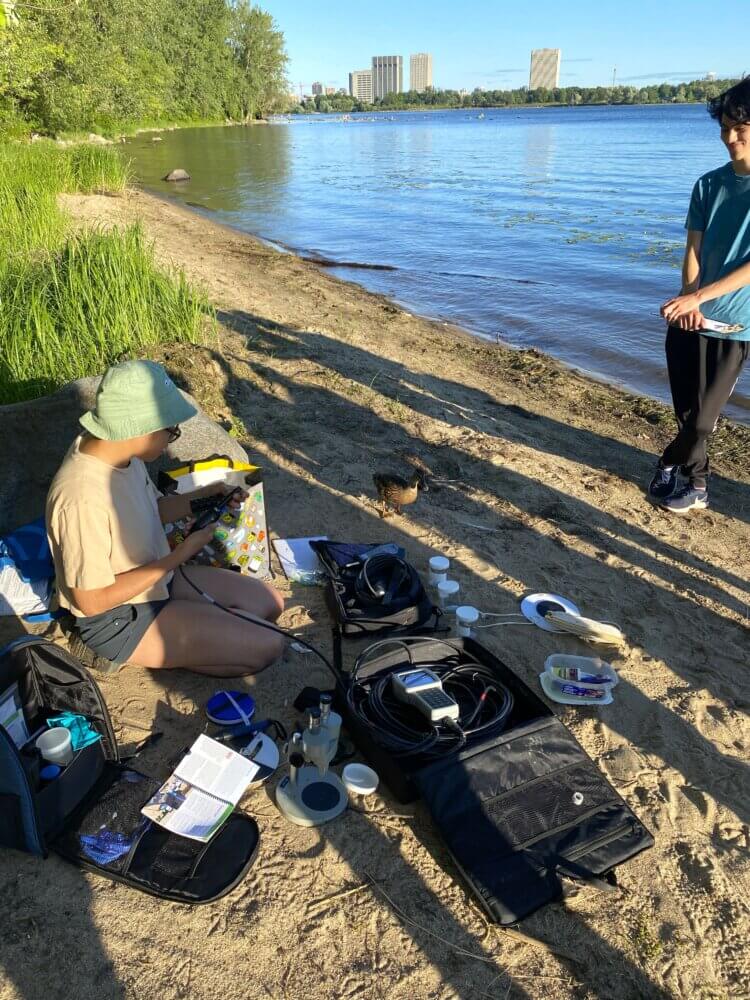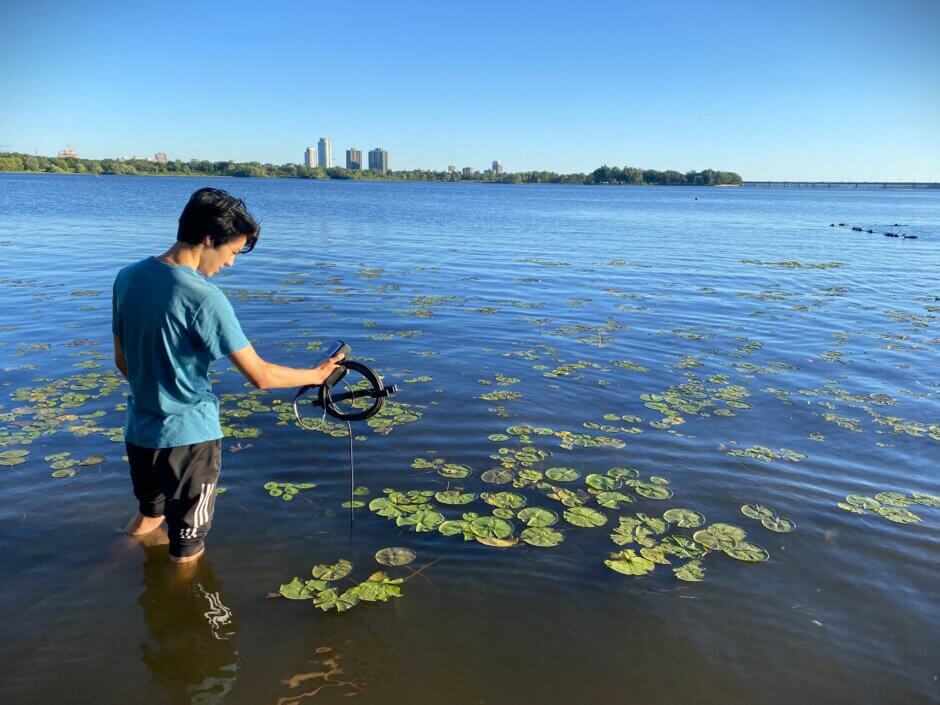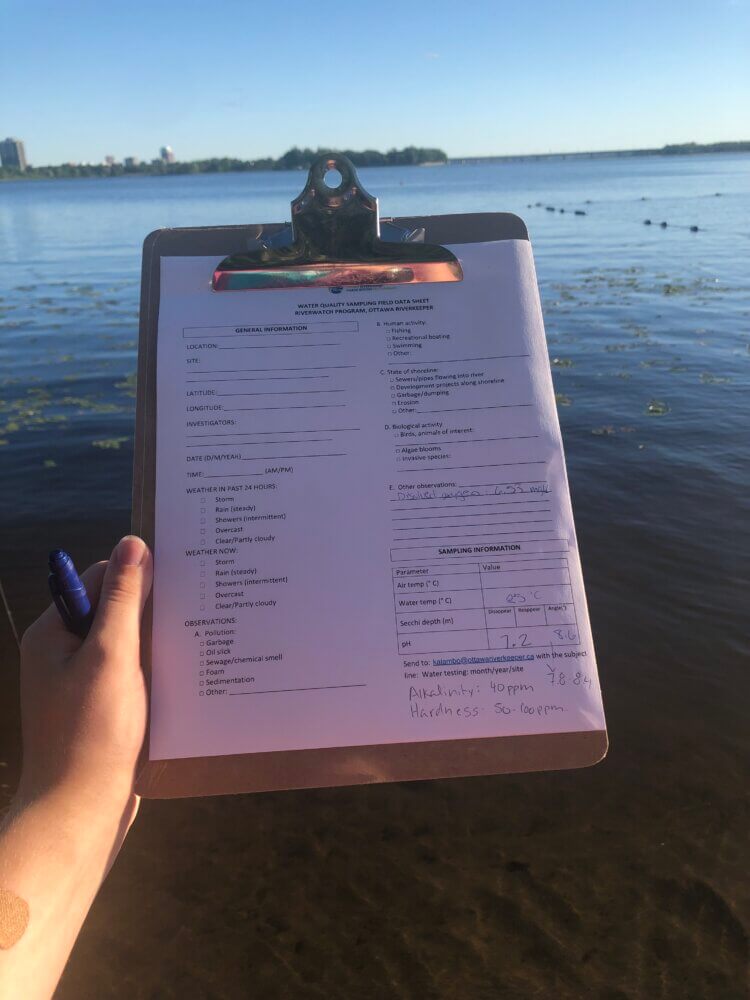Posted: August 15, 2022
Peat Bogs, Water Quality, and Hydro Dams with the Youth Water Leaders

The Youth Water Leaders continue their exploration of the watershed, with a visit to the Mer Bleue peat bog, lessons on water quality at Parc Moussette, and a tour of a hydro power generating facility.
Written by Youth Water Leader Lydia Kropp
The Youth Water Leaders have been busy the last couple of weeks exploring different areas of the watershed and learning more about water.
Mer Bleue Bog
A few weeks ago they went on a tour of the Mer Bleue Bog with one of Carleton University’s geography professors, Elyn Humphreys. Elyn has been conducting research on bogs for many years and the youth were lucky enough to go visit her research site and learn about how bogs are natural carbon sinks (a carbon sink is when something absorbs more carbon than it releases). The conditions of the bog prevent organic matter from decomposing completely: instead of being released into the atmosphere as CO2, carbon is buried in the spongy layers of peat.



As part of the tour, the youth got to see what equipment is used to study the bog as well as learn about some common features of bogs; for example that they are mostly made up of partially-decomposed organic material and that the water in bogs comes only from precipitation. Peat bogs are dominated by sphagnum mosses, a fluffy green plant that is highly absorbent, helping the bog to retain moisture even after long periods without rain! But as summers become hotter and drier due to climate change, it is possible that more of the peat will dry out and decompose each year, releasing carbon back into the atmosphere.
Water Quality Monitoring

Last week the Water Leaders traveled to Parc Moussette to learn about the actions that Ottawa Riverkeeper is taking to study and monitor the watershed. With help from Katy, Ottawa Riverkeeper’s Biologist, the youth got to learn about how important it is to monitor water and talk about some current issues our watershed is facing, like algae blooms.
After a short presentation from Katy, they moved to the water to take some samples and measure different water quality indicators like pH levels, the amount of dissolved oxygen and the alkalinity of the water. They learned what algae blooms can look like and the impacts they can have on our waterways. They also talked about how environmental conditions measured by each indicator can affect the different species in our watershed. The group also learned about the importance of Ottawa Riverkeeper’s citizen scientists who monitor water quality and invasive species throughout the watershed as part of the Riverwatcher network.


Farmer’s Rapids generating station
To finish off the Youth Water Leaders trip through the watershed, they visited La Centrale des Rapides Farmer (Farmer’s Rapids generating station). This generating station has been in operation since 1927 and is operated by Hydro-Québec. The youth had the opportunity to get a guided tour through the facility learning about the history of Hydro-Québec as well as how the power of rivers is harnessed to produce electricity. Even though hydroelectricity is a renewable, clean form of energy the youth discussed some of the disadvantages to hydroelectric dams like drastic changes to the environment, displacement of communities, and preventing the continuous flow of rivers that allow fish and other aquatic animals to migrate.
< Previous post Next post >